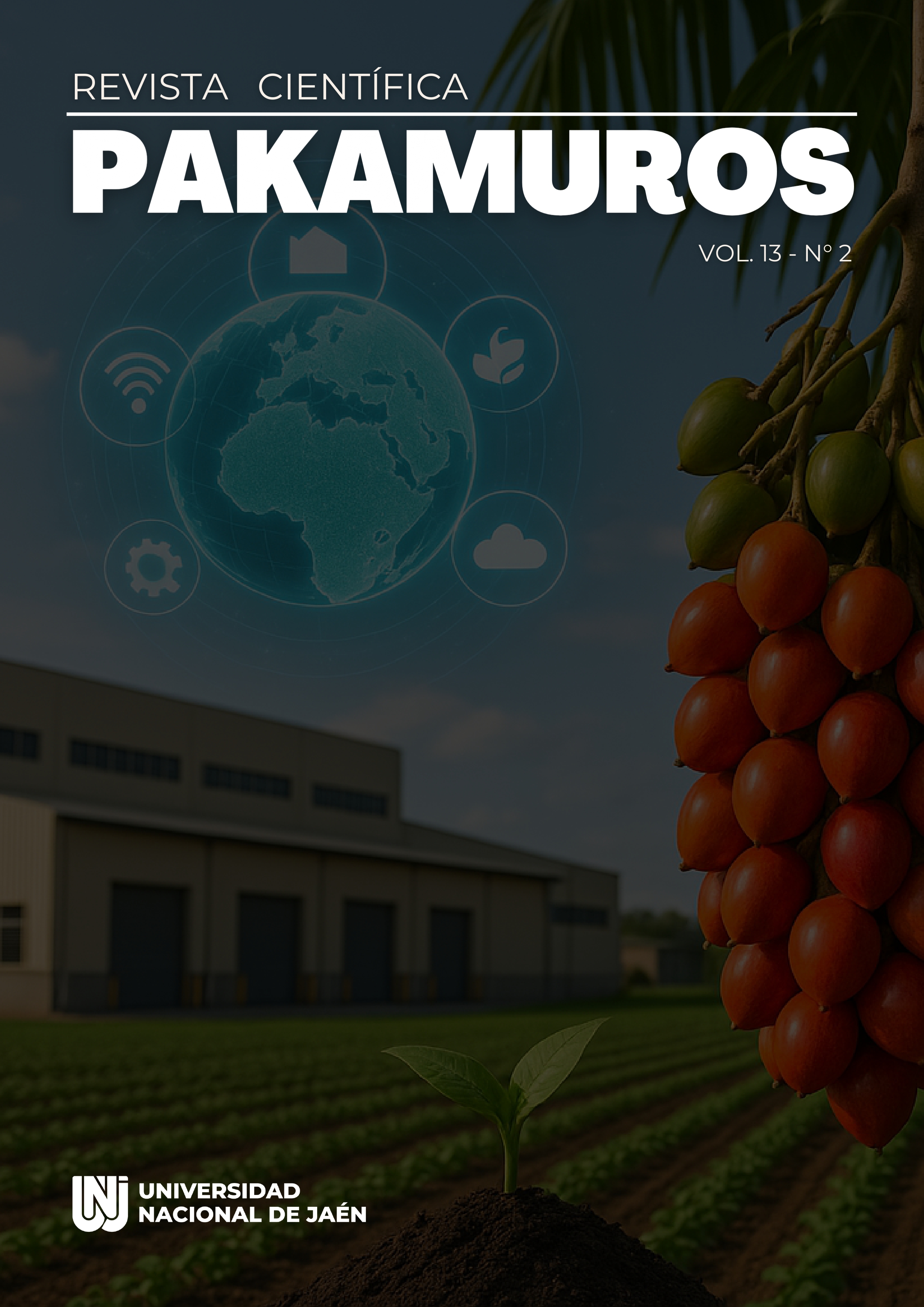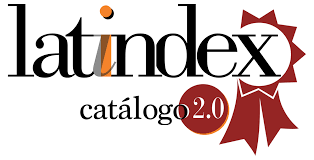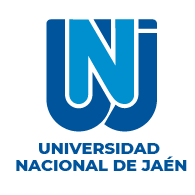The environmental shadow of meat: challenges and solutions for a sustainable future
DOI:
https://doi.org/10.37787/2evgey06Keywords:
Meat, environmental impact, sustainability, challenges, strategiesAbstract
The growing global demand for meat has generated a profound environmental, economic and social crisis. Where intensive production, slaughter and distribution generate a great environmental impact, due to the high water footprint, deforestation and greenhouse gas (GHG) emissions that contribute to the loss of biodiversity. The objective of this review is to analyze the challenges and possible solutions for a sustainable future in the meat industry, highlighting the urgency of moving towards more responsible food systems, due to the fact that 1.85 kg of CO2 fluctuates per kilogram of meat and its consumption also produces 84% hepatocellular carcinoma. On the other hand, agroecological practices are explored such as efficient manure management, the use of biodigesters to generate renewable energy, composting for the inactivation of pathogens in poultry waste, and the use of black soldier fly larvae as an alternative source of food for animals. and the promotion of plant alternatives as a meat substitute. The importance of innovation and the participation of all actors, from producers to consumers, in the search for solutions is highlighted. It is concluded that the transformation towards a sustainable food system requires a cultural change, as well as employing various strategies that contribute to reducing the environmental impact.
References
Abarca, G., Villanueva, M., Bächler, S. T., Fredes, C., Aguirre, C., & Parada, A. (2024). Hacia una alimentación saludable y sostenible: selección de alimentos ricos en proteínas. Revista chilena de nutrición, 51(6), 485-493. doi: https://doi.org/10.4067/s0717-75182024000600485
Acosta, A. (2017). Reducir a la mitad el consumo de carne para salvar el planeta y la salud. ABC Sociedad. https://www.abc.es/sociedad/abci-reducir-mitad-consumo-carne-para-salvar-planeta-y-salud-201712042137_noticia.html
Arellano, V. (2023). Aprovechamiento y elaboración de carne vegetal tipo hamburguesa a partir de la reutilización de la cáscara de plátano macho (Musa balbisiana)[Trabajo de integración curricular, Escuela Superior Politécnica de Chimborazo, Riobamba, Ecuador]. http://dspace.espoch.edu.ec/handle/123456789/20299
Arjen, Y. (2012). El uso oculto de los recursos hídricos detrás de la carne y los productos lácteos. Animal Frontiers, 2(2),3-8. https://doi.org/10.2527/af.2012-0038
Arteaga, M., y Pasquali, C. (2013). Impacto socio ambiental de las empresas cárnicas de los Valles del Tuy. Multiciencias, 13(4). https://www.redalyc.org/pdf/904/90430055004.pdf
Cepero, Y., Nuñez, M., & Beldarrain, T. (2016). Desarrollo de Productos Cárnicos a Partir del Aprovechamiento de Subproductos del Sacrificio Porcino. Ciencia y Tecnología de Alimentos, 14(3), 8.
Charry, M., Enciso, K., Peters, M. y Burkat, S. (2019). Intensificación sostenible de la producción de carne de vacuno en Colombia: posibilidades de diferenciación de productos y primas de precios. Agric Econ, 7(22). https://doi.org/10.1186/s40100-019-0143-7
Confederación de Asociaciones de Frisona Española [CONAFE]. (2022). Realidad Ganadera: ¿Cuánta agua se utiliza para producir 1 kg de carne? Revista Frisona. https://www.revistafrisona.com/Noticia/realidadganadera-cuanta-agua-se-utiliza-para-producir-1-kg-de-carne
Consejo Nacional del Ambiente [CONAM] (2023). Informe sobre el impacto ambiental del sector agropecuario en Perú. Consejo Nacional del Medio Ambiente.
Dirección General de Salud e Inocuidad Alimentaria [DIGESA] (2023). Evaluación de residuos en mataderos municipales de Cajamarca. Dirección General de Salud Ambiental.
Enviromental Protection Agency [EPA] (2023). Greenhouse Gas Inventory Report. Environmental Protection Agency. https://www.epa.gov/ghgreport
Esquivel, A. y Salgado, M. (2020). Huella hídrica de once productos de origen animal de México y Estados Unidos. RUIIEC repositorio universitario, 2(2),324-338. https://ru.iiec.unam.mx/5116/
Food and Agriculture Organization of the United Nations [FAO] (2022). The Future of Food and Agriculture. Food and Agriculture Organization of the United Nations. https://www.fao.org/3/cc0660en/cc0660en.pdf
Food and Agriculture Organization of the United Nations [FAO] (2023). Global Meat Market Trends. Food and Agriculture Organization.
Glone, J. (2013). The future of pork production in the world: Towards sustainable, welfare-positive systems. Animals, 3 (2), 401-415. https://doi.org/10.3390/ani3020401
Goldberg, R., & Droste, J. (2012). McDonald’s Corporation: gestión de una cadena de suministros sostenible. McVictory, 9. https://red.uao.edu.co/server/api/core/bitstreams/fac148cd-44bc-4766-9f5b-b64e0fa19a2c/content
González, N., Marqués, M., Nadal, M., y Domingo, J. (2020). Meat consumption: ¿Which are the current global risks? A review of recent (2010–2020) evidence. Food Research International (Ottawa, Ont.), 137(109341), 109341.https://doi.org/10.1016/j.foodres.2020.109341
González, S. y Reyes, B. (2023). Procedimiento para la gestión ambiental en la producción porcina: municipio Holguín, Cuba. Ciencias Holguín, 29(2). https://www.redalyc.org/journal/1815/181574886005/html/
Instituto Nacional de Estadística e Informática [INEI] (2023). Consumo per cápita de carne en el Perú. Instituto Nacional de Estadística e Informática.
Instituto Nacional de Tecnología Agropecuaria [INTA] (2023). Impacto ambiental del sector ganadero en Argentina. Instituto Nacional de Tecnología Agropecuaria.
Kalhor, T., Rajabipour, A., Akram, A., y Sharifi, M. (2016). Environmental impact assessment of chicken meat production using life cycle assessment. Information Processing in Agriculture, 3(4), 262–271. https://www.sciencedirect.com/science/article/pii/S2214317316300336
Levi, S., Chun, F., Baruch, L., y Machluf, M. (2022). Scaffolding technologies for the engineering of cultured meat: Towards a safe, sustainable, and scalable production. Trends in Food Science and Technology, 126, 13-25. https://www.sciencedirect.com/science/article/pii/S0924224422001790
Lozano, G., Escalona, M., Baca del Moral, J, y Cuevas, V. (2023). Principios y prácticas agroecológicas para la transición hacia una ganadería bovina sostenible. Revista mexicana de ciencias pecuarias, 14(3), 696-724. https://doi.org/10.22319/rmcp.v14i3.6287
Martínez, N., Álvarez, E., y García, M. (2017). El liderazgo en las organizaciones: evolución histórica y principales enfoques teóricos. Revista de Ciencias Sociales (Cr), 158 (4), https: //dialnet.unirioja.es /servlet /articulo? código=6214565https
Ministerio del Ambiente del Perú [MINAM] (2023). Evaluación del impacto ambiental en Cusco. Ministerio del Ambiente del Perú.
Ministry of Agriculture, Food and Rural Affairs (MAFRA). (2022). Roadmap to achieve carbon neutrality in the agricultural sector by 2050. Government of South Korea.
Nguyen, T., Hermansen, J. y Mogensen, L. (2019). Environmental costs of meat production: the case of typical EU pork production.
Journal of Cleaner Production 28 (2012) 168-176 https://sci-hub.se/10.1016/j.jclepro.2011.08.018.
Nguyen, T., Hermansen, J. y Mogensen, L. (2019). Environmental costs of meat production: the case of typical EU pork production. Journal of Cleaner Production, 28, 168-176. https://doi.org/10.1016/j.jclepro.2011.08.018
Organización de las Naciones Unidas para la Alimentación y la Agricultura. (2004). Carne y productos cárnicos. https://www.fao.org/4/j3877s/j3877s08.htm
Organización Mundial de Sanidad Animal. (2024). Bienestar animal: un bien vital para un mundo más sostenible. https://doi.org/10.20506/woah.3445
Organización para la Cooperación y el Desarrollo Económicos (OCDE)/FAO (2017), OCDE-FAO. Perspectivas Agrícolas 2017-2026, Éditions OCDE, París. Doi: http://dx.doi.org/10.1787/agr_outlook-2017-es
Orús, A. (2024). Consumo de carne a nivel mundial por tipo 1990-2023. Statista, 20(5). https://es.statista.com/estadisticas/1330024/consumo-de-carne-a-nivel-mundial-por-tipo/#:~:text=El consumo mundial de carne,135%2C5 millones en 2023.
Palasca, M., y Qaim, M. (2022). Meat consumption and sustainability. Annual Review of Resource Economics, 14(1). https://www.annualreviews.org/content/journals/10.1146/annurev-resource-111820-032340
Pelcastre, V., Ramírez, S., Cruz, E., Hernández, M., Ruíz, A., Vázquez, G. (2018). Aprovechamiento de Sangre Ovina para la Elaboración de un Sustituto de Empanizador. Pädi Boletín Científico de Ciencias Básicas e Ingenierías Del ICBI, 5(10). https://portal.amelica.org/ameli/journal/595/5952866017/5952866017.pdf
Reyes, P. y Cano, D. (2022). Efectos de la agricultura intensiva y el cambio climático sobre la biodiversidad. Revista de Investigaciones Altoandinas, 24(1). http://www.scielo.org.pe/scielo.php?pid=S2313-29572022000100053&script=sci_abstract
Rodríguez, B. y Guzmán, A. (2023). Consumo de carne y sostenibilidad: Actitudes de los jóvenes en España. Revista Internacional de Humanidades. 19(3). https://www.ojs.bdtopten.com/33015.eaapublishing/index.php/humanrev/article/view/1677/1794
Rosas, J. (2012). Fish matters: Importance of aquatic foods in human nutrition and global food supply. Critical Reviews in Food Science and Nutrition, 52(9), 882-889. https://www.tandfonline.com/doi/abs/10.1080/10641262.2012.753405
Rosas-Martínez, V., & Aguilar-Rivera, N. (2022). Compostaje para la reducción de excretas de aves (Gallus gallus domesticus). Agron. Mesoam.
Salahuddin, M., Ahmed, A., Kohzy, H., Tomberlin, J. y Jayant, L. (2024). Flight towards Sustainability in Poultry Nutrition with Black Soldier Fly Larvae. Pubmed City, 14(3) 510. https://doi:10.3390/ani14030510
Sandoval, J., Doza, E., y Barbosa, F. (2023). Transición Sostenible del Sector Ganadero Bovino Colombiano y su Vinculación con los Objetivos de Desarrollo Sostenible. Ciencia, Tecnología y Sociedad, 16(33), 30. https://doi.org/https://doi.org/10.36790/epistemus.v16i33.227
Servicio Nacional de Meteorología e Hidrología [SENAMHI] (2022). Cambio climático y degradación de pastizales en Puno. Servicio Nacional de Meteorología e Hidrología del Perú.
Setiawan, V., y Ellitan, L. (2023). Supply Chain Management and Supply Chain Performance: The Case of Mcdonald’s. Jurnal Ilmiah Multidisiplin, 2(3).
Tedeschi, L. (2024). Applying Systems Thinking to Sustainable Beef Production Management: Modeling-Based Evidence for Enhancing Ecosystem Services. Artículo Systems 12(11) 446. https://www.mdpi.com/2079-8954/12/11/446
Torres, M., Ochoa, N., Nieto, A., Murillo, B., Lavastida, P y Alfonso, P. (2023). Inactivación de patógenos en residuos avícolas mediante el compostaje. Revista de investigaciones veterinarias del Peru, 34(4). https://doi.org/10.15381/rivep.v34i4.24488
Trujillo, L. (2022). Innovación de Productos en la Minimización de Residuos y Mejoramiento Productivo de una Empresa de la Industria Cárnica. Agrociencia, 21(1), 55
Weiblen, R., y Domínguez, R. (2022). Estimating chicken meat productions of leader countries for 2019-2025 years. Critical Reviews in Food Science and Nutrition, 62(22), 6211-6221. https://www.scielo.br/j/cr/a/PYkxgFC8j7sPCkWbRYMtcWR/
Whitton, C., Bogueva, D., Marinova, D., y Phillips, C. (2021). Are we approaching peak meat consumption? Analysis of meat consumption from 2000 to 2019 in 35 countries and its relationship to gross domestic product. Animals, 11(12) 3466. https://www.mdpi.com/2076-2615/11/12/3466
WWF (2022). Impacto de la ganadería en la deforestación amazónica. World Wildlife Fund.
Xue, L., Prass, N., Gollnow, S., Davis, J., Scherhaufer, S., Östergren, K., Cheng, S., Liu, G. (2019). Efficiency and Carbon Footprint of the German Meat Supply Chain. Environ Sci Technol. 53(9): 5133-5142. https://pubmed.ncbi.nlm.nih.gov/30968696/
Yoon, I., Sang, O., Kim, S. (2024). Sustainable animal agriculture in the United States and the implication in the Republic of Korea. Anim Sci Technol. 66(2): 279-294 https://doi.org/10.5187/ja
Published
Issue
Section
License
Copyright (c) 2025 Pakamuros Scientific Journal

This work is licensed under a Creative Commons Attribution-NonCommercial 4.0 International License.













